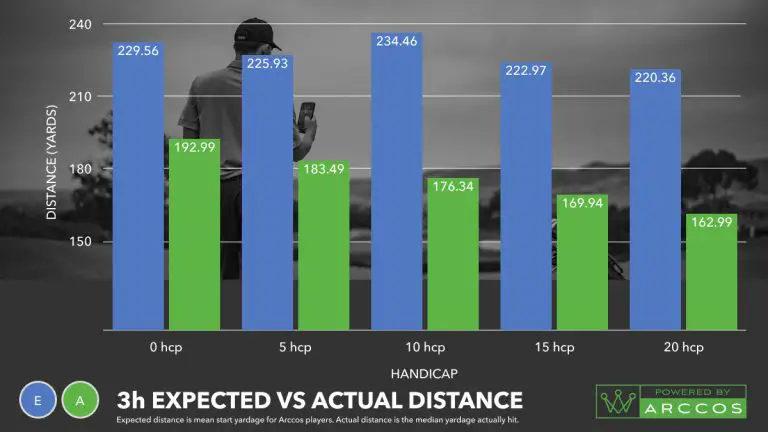How To Get Better At Golf Without Lessons

Golf is a game that combines precision, strategy, and a touch of finesse. Aspiring golfers often seek ways to improve their skills without the expense and time commitment of formal lessons. While professional instruction can be valuable, there are numerous techniques and strategies you can employ to enhance your golf game independently. Whether you’re a beginner looking to establish a solid foundation or an experienced golfer aiming to fine-tune specific aspects of your game, this article will provide you with practical insights and actionable tips to help you get better at golf without taking lessons.
By exploring the fundamentals of golf, developing a consistent swing, mastering the art of the short game, enhancing accuracy and precision, and focusing on mental and physical preparation, you can unlock your potential and elevate your golfing prowess. We will also delve into the role of technology and resources in self-improvement, as well as effective practice techniques to maximize your progress on the course.
So, if you’re ready to embark on a journey of self-improvement, grab your clubs and get ready to discover how you can elevate your golf game to new heights, all without stepping foot in a formal lesson. Get ready to unlock your full golfing potential and enjoy the satisfaction of seeing your scores drop and your confidence soar on the course.

Understanding the Fundamentals of Golf
A solid understanding of the fundamentals lays the groundwork for improvement in any sport, and golf is no exception. Let’s explore the key elements that form the foundation of your golf swing.
Grip Techniques
The grip is your connection to the golf club and has a significant impact on your swing. There are several grip techniques you can experiment with to find the one that suits you best. Here are three commonly used grip techniques:
| Grip Technique | Description |
|---|---|
| Interlocking Grip | This grip involves interlocking the little finger of your trailing hand with the index finger of your lead hand. It promotes unity between your hands and can provide a stable grip. |
| Overlapping Grip | In this grip, your little finger of the trailing hand rests on top of the index finger of the lead hand. It offers a comfortable grip and is widely used by golfers. |
| Baseball Grip | The baseball grip is similar to how you would hold a baseball bat, with both hands parallel to each other. It provides a relaxed grip but may sacrifice some control. |
Proper Stance and Posture
Your stance and posture significantly influence your swing mechanics and overall performance. Pay attention to the following aspects to establish a solid stance:
- Balanced Stance: Distribute your weight evenly between your feet, maintaining stability throughout your swing.
- Aligning Your Feet and Shoulders: Position your feet parallel to the target line and align your shoulders square to the target.
- Maintaining Good Posture Throughout the Swing: Keep your spine straight, and avoid slouching or excessively bending over. This allows for better rotation and weight transfer during your swing.
By mastering the grip techniques and adopting a proper stance and posture, you set yourself up for success in improving your golf game.
Developing a Consistent Swing
A consistent swing is a key element in achieving accuracy and distance in your shots. Let’s delve into the techniques that can help you develop a smooth and reliable swing.
Generating Power with the Body
To generate power and maximize your swing’s potential, it’s crucial to utilize the strength and coordination of your body. Consider the following techniques:
- Utilizing Your Core Muscles: Engage your core muscles, including the abdomen and lower back, to create rotational power and stability during your swing.
- Transferring Weight for Increased Power: Shift your weight from your back foot to your front foot during the downswing, transferring energy and generating power.
- Coordinating Arm and Hip Movements: Sync your arm and hip movements to achieve a well-timed and fluid swing.
Perfecting the Backswing
The backswing sets the stage for a successful downswing and impact with the ball. Focus on these aspects to refine your backswing:
- Proper Club Positioning: Position the club in line with your target during the backswing, ensuring a consistent swing path.
- Maintaining Tempo and Rhythm: Maintain a smooth and controlled tempo throughout your backswing, avoiding sudden jerks or rushed movements.
- Focusing on a Smooth Transition from the backswing to the downswing, aim for a seamless transition that allows for a powerful and accurate strike.
Executing a Solid Downswing
The downswing is where the power of your swing is unleashed. Pay attention to the following factors to execute a solid downswing:
- Initiating the Downswing with the Hips: Start the downswing by initiating the movement with your hips, allowing for a coordinated and effective transfer of energy.
- Maintaining Lag for Added Distance: Lag refers to the angle formed between your wrists and the clubshaft during the downswing. Retaining this lag until impact can result in increased clubhead speed and distance.
- Striking the Ball with a Square Clubface: Ensure that the clubface is square at impact, meaning it is perpendicular to the target line. This promotes accuracy and helps prevent slicing or hooking the ball.
By focusing on developing a consistent and powerful swing, you will witness improvements in your distance, accuracy, and overall performance on the golf course.
Mastering the Short Game
While the long game may receive much of the attention, mastering the short game is equally crucial for lowering your scores. Let’s explore techniques to improve your putting, chipping, and pitching skills.
Developing Putting Skills
Putting is often considered the most critical aspect of the game. To enhance your putting proficiency, consider the following:
- Reading the Green and Analyzing Breaks: Analyze the slope and contours of the green, taking note of any potential breaks that may influence your putt’s direction.
- Choosing the Right Putter for Your Stroke: Experiment with different putters to find one that suits your stroke and helps you maintain a consistent and comfortable putting motion.
- Practicing Distance Control and Accuracy: Set up drills to improve your distance control, practicing putts from varying distances to develop a feel for how far the ball will roll with different strokes.
Improving Chipping and Pitching Techniques
Chipping and pitching are vital skills for getting the ball close to the hole from around the green. Consider the following tips:
- Utilizing Different Lofted Wedges: Depending on the situation, choose the appropriate wedge with the loft and bounce that will best execute the shot.
- Controlling Ball Height and Spin: Experiment with different techniques to control the height and spin of your chips and pitches, allowing for greater precision and stopping power.
- Enhancing Accuracy and Consistency: Practice various chipping and pitching scenarios, focusing on achieving accurate distances and landing spots to improve your overall short game proficiency.
By dedicating time to master the intricacies of the short game, you can significantly lower your scores and improve your overall performance on the golf course.
Enhancing Accuracy and Precision
Accurate shot-making is a key aspect of becoming a proficient golfer. Let’s explore techniques to enhance your accuracy and precision on the course.
Aiming and Alignment
Proper aiming and alignment are essential for hitting your intended target consistently. Consider the following factors:
- Selecting a Target and Visualizing the Shot: Before each shot, select a specific target and visualize the trajectory and path of the ball to that target.
- Proper Alignment of Body and Clubface: Align your body and clubface parallel to the target line, ensuring that they are pointing in the intended direction.
- Adjusting for Wind and Slopes: Take into account external factors such as wind and slopes when aligning your shot, making necessary adjustments to compensate for their influence.
Understanding Club Distances
Knowing how far you can hit each club in your bag is crucial for making informed shot selections. Consider the following strategies:
- Experimenting with Different Clubs: Spend time on the driving range, hitting shots with different clubs to understand the distance and trajectory characteristics of each one.
- Tracking and Recording Yardages: Keep a record of the distances you achieve with each club. This information will serve as a valuable reference during rounds, allowing you to select the appropriate club for each shot.
- Fine-tuning Swing Power for Specific Distances: Practice controlling your swing power to achieve consistent distances with each club. This can be done by adjusting the length of your backswing or the tempo of your swing.
By improving your accuracy and understanding your club distances, you will gain confidence in your shot-making abilities and be better equipped to navigate the course effectively.
Mental and Physical Preparation
Golf is a game that requires both mental and physical readiness. Let’s explore strategies to prepare yourself mentally and physically for optimal performance on the golf course.
Developing a Pre-shot Routine
Establishing a pre-shot routine helps you prepare mentally for each shot and can improve consistency and focus. Consider the following elements for an effective pre-shot routine:
- Visualizing the Shot and Setting Goals: Take a moment to visualize the intended shot, imagining the desired outcome. Set clear goals for each shot to guide your focus.
- Clearing the Mind and Maintaining Focus: Use techniques such as deep breathing or positive self-talk to clear your mind of distractions and maintain focus on the task at hand.
- Establishing a Consistent Routine: Develop a sequence of actions that you go through before each shot, ensuring consistency and familiarity.
A well-defined pre-shot routine can help you approach each shot with confidence and a clear mind, enhancing your overall performance.
Building Strength and Flexibility
Physical fitness and flexibility play a significant role in executing a sound golf swing. Consider incorporating the following into your fitness routine:
- Incorporating Golf-specific Exercises: Engage in exercises that target the muscles used in the golf swing, such as rotational exercises, core strengthening, and flexibility training.
- Stretching for Improved Range of Motion: Perform stretching exercises that focus on increasing flexibility in your hips, shoulders, and back. This will allow for a more fluid and unrestricted swing motion.
- Enhancing Endurance for Stamina: Golf can be physically demanding, especially during long rounds. Incorporate cardiovascular exercises and endurance training to build stamina and maintain focus throughout your round.
By improving your physical fitness and flexibility, you will not only enhance your swing mechanics but also increase your endurance and overall performance on the golf course.
Utilizing Technology and Resources
In today’s digital age, numerous technological tools and resources are available to help golfers improve their skills. Let’s explore how you can leverage technology to enhance your golf game.
Video Analysis and Swing Apps
Video analysis and swing apps provide valuable insights into your swing mechanics and allow for self-assessment. Consider the following:
- Recording and Analyzing Your Swing: Use your smartphone or a dedicated video camera to record your swing from different angles. Analyze the footage to identify areas for improvement.
- Identifying Areas for Improvement: Pay attention to elements such as posture, grip, alignment, and swing plane. Compare your swing to professional golfers or seek online tutorials for guidance.
- Utilizing Mobile Apps and Online Resources: Explore golf-related apps and online resources that provide swing analysis, drills, and instructional content to assist you in your improvement journey.
By utilizing video analysis tools and swing apps, you can gain valuable insights into your swing mechanics and make targeted adjustments to improve your overall technique.
Golf Training Aids and Equipment
There is a wide range of training aids and equipment available to help golfers refine their skills. Consider incorporating the following into your practice routine:
- Benefiting from Training Devices: Utilize training aids such as alignment sticks, impact bags, and swing trainers to develop specific aspects of your game, such as alignment, impact position, and swing tempo.
- Using Alignment Tools for Practice: Invest in alignment aids such as putting mirrors or alignment rods to ensure proper alignment during practice sessions. These tools can help you develop a consistent setup and alignment, leading to improved accuracy on the course.
- Selecting Suitable Equipment for Your Game: Ensure that your clubs and other equipment are suited to your skill level and swing characteristics. Consider getting fitted by a professional to optimize your equipment for maximum performance.
By utilizing golf training aids and selecting appropriate equipment, you can supplement your practice sessions and make targeted improvements to your golf game.
Practicing Effectively and Efficiently
Practicing with purpose and focus is crucial for improvement. Let’s explore strategies for effective and efficient practice sessions.
Creating a Practice Plan
Approach your practice sessions with a clear plan and specific goals in mind. Consider the following when creating a practice plan:
- Setting Specific Goals and Objectives: Identify the specific areas of your game that you want to improve and set achievable goals for each practice session.
- Allocating Time for Different Aspects of the Game: Divide your practice time among different aspects of your game, such as the long game, short game, and putting, based on your goals and areas of focus.
- Practicing with Intention and Focus: Maintain a high level of focus and concentration during practice, treating each shot as if it were on the course. Avoid mindless repetition and strive for quality over quantity.
By having a structured practice plan, you can ensure that your practice sessions are purposeful and geared towards specific areas of improvement.
Incorporating Drills and Games
Engaging in drills and practice games can make your practice sessions more engaging and simulate on-course situations. Consider the following:
- Engaging in Competitive Practice Sessions: Challenge yourself by incorporating friendly competitions and games into your practice sessions. This can add a level of pressure and help you develop skills in a more realistic setting.
- Utilizing Skill-building Drills: Focus on drills that target specific aspects of your game, such as accuracy, distance control, and shot shaping. There are numerous resources available online that provide a variety of drills for different skill levels.
- Tracking Progress and Celebrating Achievements: Keep track of your performance during practice sessions, noting areas of improvement and milestones reached. Celebrate achievements to stay motivated and inspired.
By incorporating drills and games into your practice routine, you can make your sessions more enjoyable, simulate real-life golf scenarios, and track your progress effectively.
Conclusion
Improving your golf skills without formal lessons is entirely possible with dedication, practice, and a systematic approach. By understanding the fundamentals, developing a consistent swing, mastering the short game, enhancing accuracy and precision, preparing mentally and physically, utilizing technology and resources, and practicing effectively, you can significantly enhance your golf game. Remember, improvement takes time and patience, so enjoy the journey and embrace the process of becoming a better golfer. With perseverance and the strategies outlined in this article, you’ll be on your way to achieving your golfing goals. So, grab your clubs, head to the course or practice range, and start your journey towards better golfing today!





